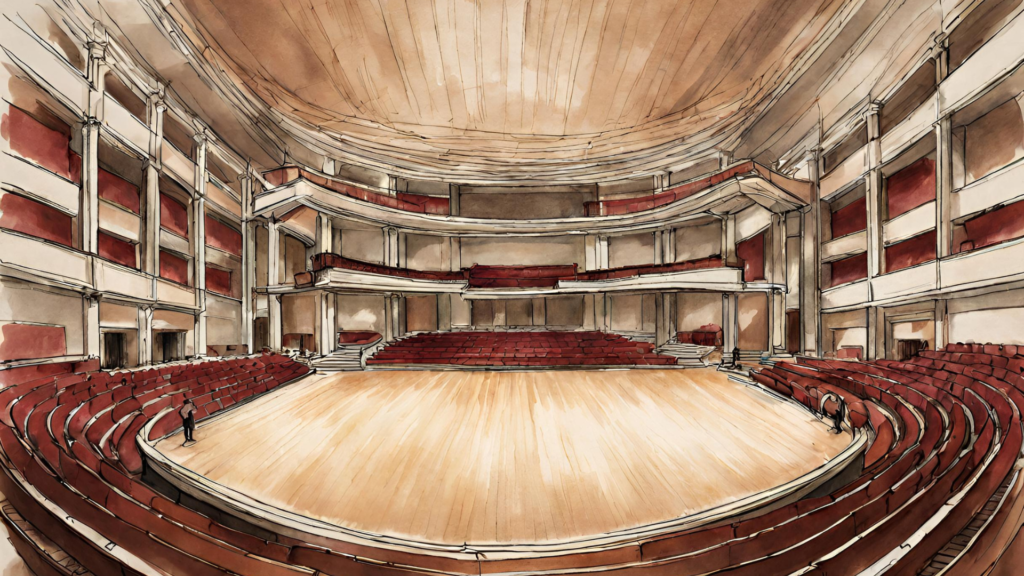How to address reverberation Problems in large spaces
What can be done to improve room acoustics?
Techniques for Managing Sound Reflections and Ensuring Clarity of Speech or Music.
Large spaces such as auditoriums, lecture halls, and open-plan offices often encounter challenges with sound quality, particularly when it comes to reverberation. This phenomenon occurs when sound reflects off hard surfaces, leading to multiple echoes that overlap, making speech difficult to understand and music less distinct. To enhance the auditory experience and ensure clarity in these large environments, it is crucial to effectively manage these sound reflections. This blog post delves into various techniques designed to mitigate reverberation issues and improve overall sound quality.

Understanding Reverberation
Reverberation fundamentally refers to the persistence of sound in a particular space after the original sound source has ceased. It is essential to understand that reverberation time, defined as the time it takes for sound to decay by 60 decibels from its initial level, plays a critical role in the acoustic quality of a space. In large rooms with minimal furnishings and abundant hard surfaces, sound waves have the propensity to bounce around, thereby increasing reverberation times. This extended reverberation can obscure speech clarity and degrade music quality, which in turn compromises the functionality of the space.
Techniques for Managing Reverberation
- Incorporate Absorptive Materials: One of the primary strategies for reducing reverberation involves integrating materials that absorb sound rather than reflecting it. Installing acoustic panels, ceiling tiles, and using thick carpets can drastically lower reverberation times by dampening sound reflections. These materials function by converting sound energy into a negligible amount of heat, effectively absorbing the sound and preventing it from perpetuating multiple echoes.
- Utilise Diffusers: Another effective approach is the use of sound diffusers. These are designed to disperse sound waves across a broader area, avoiding the build-up of echoes and standing waves, which are particularly problematic in rectangular rooms with certain dimensions. Strategic placement of diffusers on walls or ceilings can significantly improve sound distribution, thus enhancing the clarity of both spoken words and musical performances.
- Implement Bass Traps: Managing low-frequency sounds presents unique challenges due to their long wavelengths. Bass traps are specialised acoustic devices intended to absorb these low frequencies. They are commonly installed in corners where these frequencies tend to accumulate and can be particularly effective in environments like music studios or home theatres.
- Optimise Room Design and Layout: The physical configuration of a space greatly influences its acoustical characteristics. Utilising curved surfaces and designing walls at non-parallel angles helps in dispersing sound waves more evenly throughout the room, thereby minimising focal points where reverberations might concentrate. Moreover, integrating various surface levels and differing materials can disrupt sound paths and further reduce echo within a room.
- Use Soft Furnishings and Moveable Partitions: Incorporating soft furnishings such as heavy drapes, plush upholstered furniture, and decorative wall hangings can significantly contribute to sound absorption. Additionally, moveable partitions provide a versatile solution to dynamically alter the acoustics of a space. These partitions can create smaller, acoustically distinct areas within a larger room, which can be particularly useful in multipurpose spaces.

The Role of Acoustic Consultants: How to address a reverberation problem in large spaces

Achieving the optimal balance of these techniques requires professional expertise tailored to the specific needs and characteristics of the space. Acoustic consultants play an indispensable role in this process, leveraging their specialised knowledge to evaluate a space’s acoustic challenges and devise customised solutions. These solutions not only aim to reduce reverberations but also enhance the overall experience for those utilising the space, whether it’s for performances, lectures, or daily office work.
In summary, effectively managing sound reflections in large spaces involves a comprehensive approach that includes a combination of material selection, architectural adjustments, and strategic placement of sound-absorbing and diffusing elements.
By implementing these strategies, it is possible to transform an acoustically challenging environment into one where speech is crystal clear and music is richly resonant, thereby ensuring the space meets its functional and aesthetic potential.
For further advise or if you have any questions please get in touch with us here: https://heyda.co.uk/contact/
Talk to us
Contact Heyda today for a specialised consultation. Together, let’s design educational spaces where sound quality significantly contributes to the learning experience, fostering focus and understanding. Reach out to us, and let’s transform the acoustic environment of your school.
